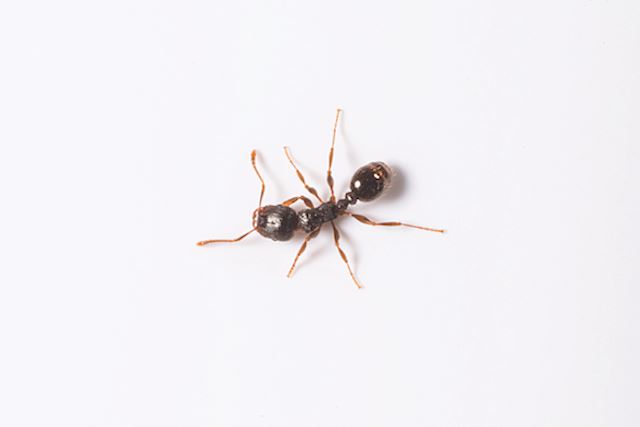

Ant Removal
Ants Overview

Ants are social insects that live in colonies, each consisting of one or more queens, workers, eggs, larvae and pupae. At various times of the year, depending upon species, there are also winged reproductive ants which eventually go on to become the queens of new colonies. Queens lay eggs while workers maintain the nest, nurture the brood and forage for food. Ant removal can be a difficult process, meaning you’ll want to call Braman for help.
Where are They Found?

There are about 1,000 different ant species populating North America. There are only a few types of house ants that are troublesome in our area, but, as you reach out for treatment, you still may find yourself wondering, “what kind of ants do I have?” Some ants nest outdoors, some indoors, and some can do both. Identification is key to knowing where they nest!
Besides the carpenter ant, we will review the other common species in the order of their prevalence in our region.
Pavement Ants
These ants get their name from their preference for nesting under stones, along curbs or in pavement cracks. They are the little brown ants making ant hills along sidewalks or foundations or pushing up sand through the cracks.
Pharaoh Ants
Pharaoh ants are so small that they resemble moving bread crumbs. They have a light-yellow body and red and black markings on their abdomen. They nest in hidden, well-protected areas throughout buildings, including in walls, behind baseboards, in refrigerator insulation and other undisturbed indoor spaces. This is one of the few species known to transmit diseases, especially in hospital settings.
Large Yellow Ants
These ants are otherwise known as citronella ants due to the distinctive odor emitted when they are crushed. The worker is yellow and about a ⅙ of an inch long. They often nest in rotting wood or under landscaping elements near the house where they feed on honeydew, a sugar-rich sticky liquid, excreted by aphids on ornamental plants.
Field Ants
The field ant is often mistaken for the carpenter ant because its similar size and coloring. Field ants can be yellow, red, black or a combination of red and black. They nest in the ground and build mounds. They like open sunny locations as opposed to the dark moist nesting sites preferred by carpenter ants.
Thief Ants
One of the smallest ants, they get their names from their habit of stealing larvae and pupae from neighboring colonies to use as food. Their other favorite foods include anything greasy and containing protein. Swarms of mating thief ants appear from June to September. They are very difficult to find because of their tiny size.
Odorous House Ants
Odorous house ants are a tiny species with a dark brown or black coloring. They can enter homes in search of food and nest in floors and walls. They are also able to build nests outside and crawl in through small cracks in your foundation. Odorous ants have a tendency to contaminate food products in the kitchen and, faithful to the name, release a foul odor when crushed.
Acrobat Ants
The acrobat ant prefers moisture and will build its nests under stones or woodpiles or in stumps or rotting logs. Their abdomens look like hearts when viewed from above. They are common in New England but prefer to live and nest outdoors.
What Makes Ants Harmful?

In general, most ants don’t pose a public health risk, but they can contaminate food and therefore should be eradicated from homes or businesses. Some species of ants can spread disease, and when not treated right away, can cause issues in medical settings. In some cases, when pavement ants enter your home to forage in large groups, they can sting and bite, becoming a true nuisance. It is pretty easy to control the foraging worker ants, but almost impossible to eliminate the colony without proper knowledge. Braman works efficiently, using the most effective methods and materials for pavement ant control.
Signs Ants are Present in Your Home or Facility

Besides seeing any of these ants yourself, you can also identify their presence in other ways. For example, some ants forage for your food so you may see them in gatherings in or on nuts, cheese, peanut butter or sweets. As ants forage, they release pheromones allowing other ants to trail behind and follow them in a line. If you see a line of ants, it is a sure sign of a developing problem and prompt ant control is needed.
Treatment

We will interview you and do a preliminary inspection to help determine how to remove ants from your home and eliminate the problem. In addition to exterior treatment, our experts may provide interior ant removal methods in areas where you have previously seen these pests. A one-time ant control service is warrantied for six months and can also be the initial service of our MultiPest Plan.
If you think you have an infestation, contact Braman immediately.

Tell us about your pest problem. We can provide a free estimate over the phone.
Call Braman 24/7 at 800-338-6757

